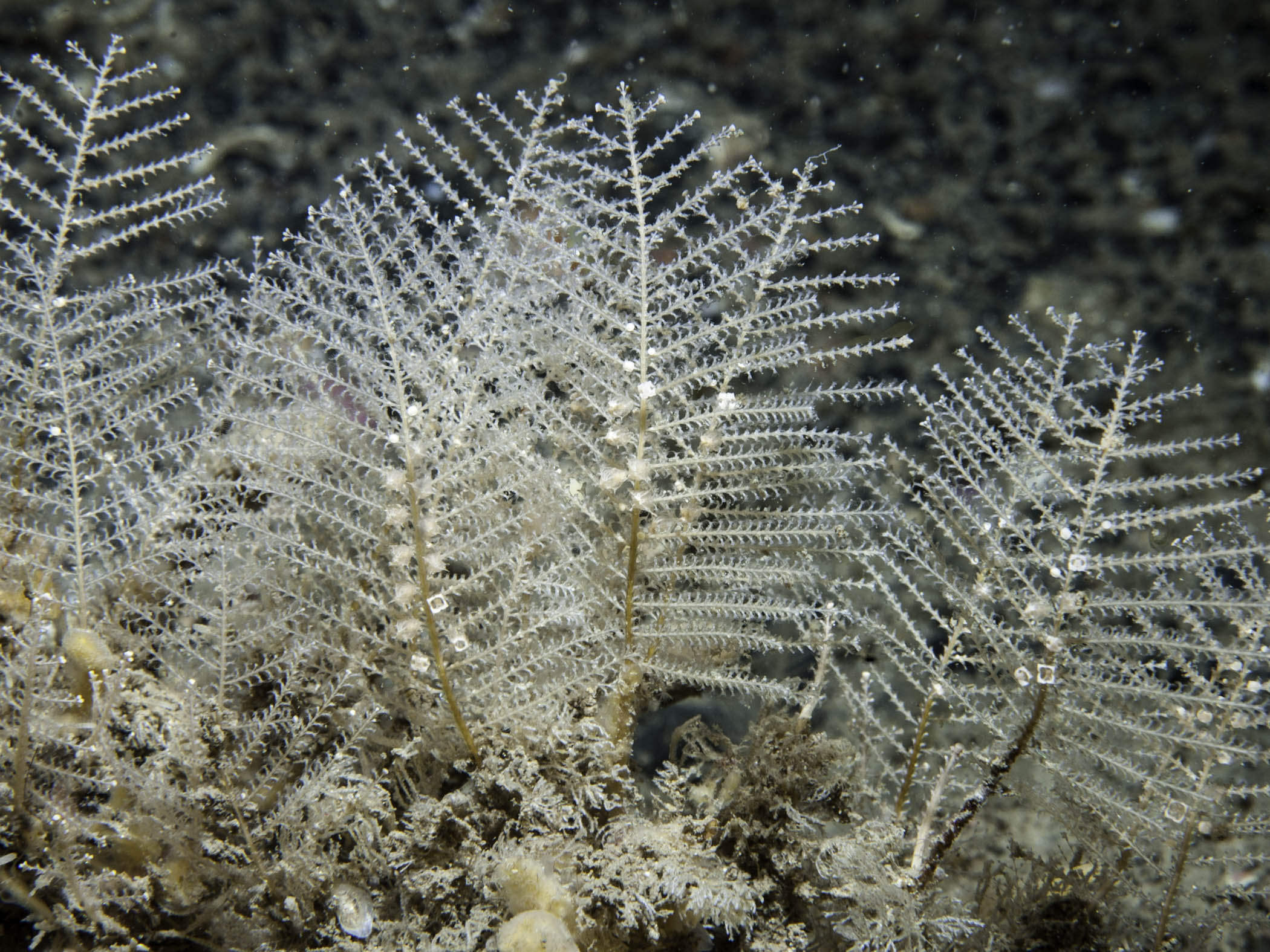| CNIDARIA : Leptothecata : Sertulariidae | SEA ANEMONES AND HYDROIDS |
Diphasia margareta (Hassall, 1841)
 |
| Diphasia margareta |
Description: The main stem of the colony is erect with alternate side branching, and occasionally secondary branching. The hydrothecae are paired oppositely and are attached to the side stem for approximately 1/2 their length. The upper half is unattached and flares outwards. The outer margin is smooth, but there is a notch in the inner margin. The male gonothecae are oval shaped and taper towards the base. There are four long spines that curve inwards towards a raised aperture. The female reproductive capsule is also ovate with four longitudinal ridges. Each ridge bears two spines, giving a total of eight. Together these spines form two rings that encircle the aperture. The top of the capsule is convex. Approximately 12 cm.
Distribution: This hydroid occurs all round the British Isles, but is commoner in the North.
Distribution Map from NBN: Diphasia margareta at National Biodiversity Network mapping facility, data for UK.
iNaturalist: Diphasia margareta at iNaturalist World Species Observations database.
GBIF data for Diphasia margareta
WoRMS: Diphasia margareta at World Register of Marine Species. Accepted name: Diphasia margareta (Hassall, 1841). AphiaID: 117880.
Classification: Biota; Animalia; Cnidaria; Medusozoa; Hydrozoa; Hydroidolina; Leptothecata; Sertularioidea; Sertulariidae; Diphasia
| Previous species | Next species |
| Picton, B.E. & Morrow, C.C. (2024). Diphasia margareta. (Hassall, 1841). [In] Encyclopedia of Marine Life of Britain and Ireland. https://www2.habitas.org.uk/marbiop-ni/speciesaccounts.php?item=D6420. Accessed on 2025-04-04 |